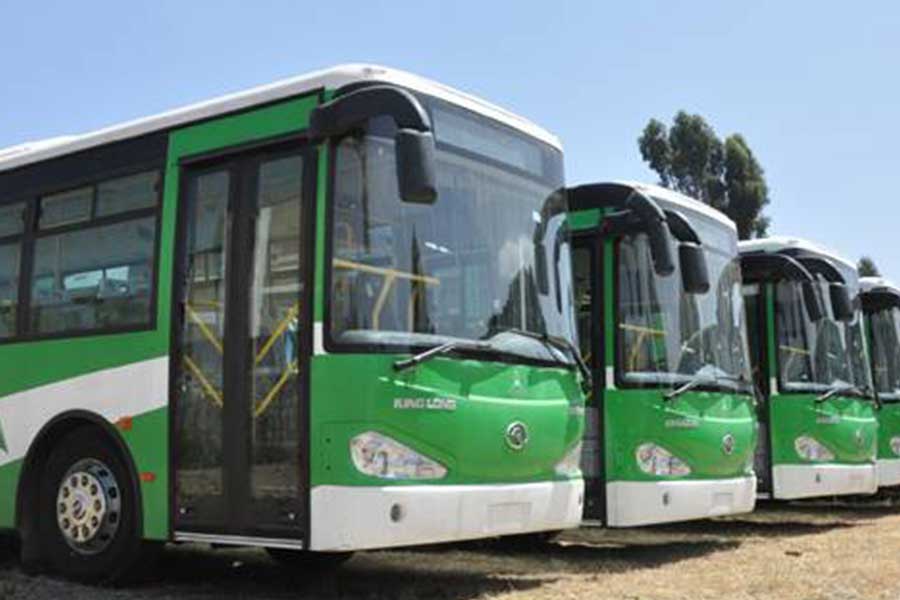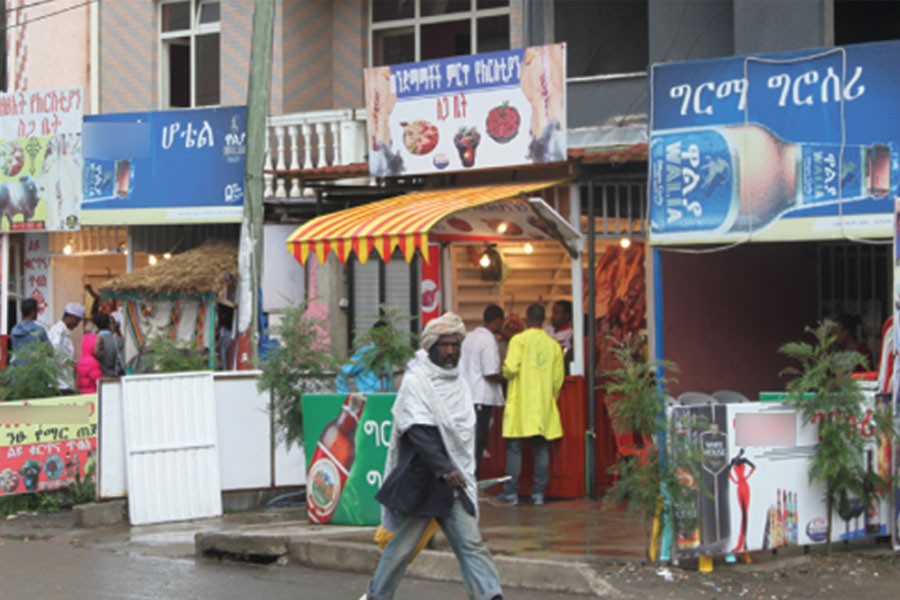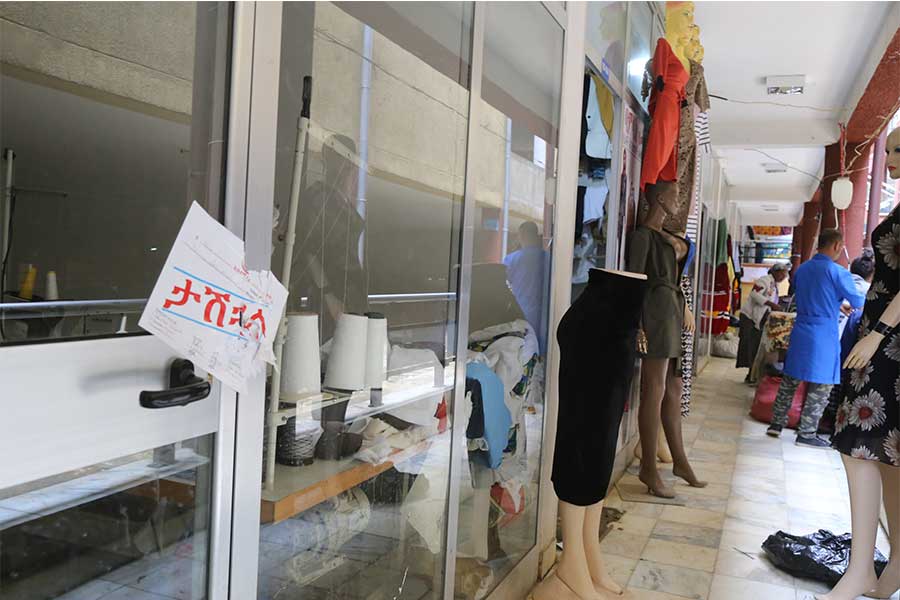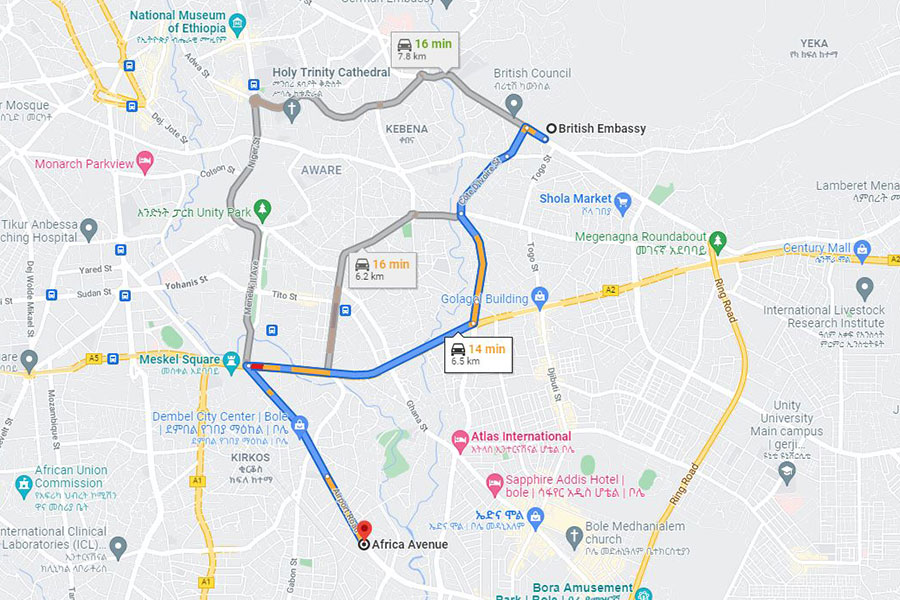
Radar | Jan 14,2023
Apr 22 , 2022
By BERSABEH GEBRE ( FORTUNE STAFF WRITER )
The road segment that connects Comoros St. (British Embassy) with Africa Avenue (Bole Road) will see the installation of 19 traffic signals, an intelligent transport system and cameras.
The project is part of a 300 million dollar programme financed by the World Bank. To be implemented at both city and federal levels, the programme aims to improve licensing systems, develop urban transport policies, and fund road projects.
The Addis Abeba City Roads Authority is to hire a firm to contract the 4.5Km road corridor upgrading, which passes through Medhanialem Cathedral, crossing the roundabout near Golagul Building and Togo Street, across the main entrance of the British Embassy. A bid to select the contractor was opened in February 2022. However, according to individuals familiar with the tendering, the selection process is still ongoing.
The Authority has budgeted 24.5 million dollars for the construction of the road.
City officials are to select a supplier to install traffic signals equipped with infrared sensors that can determine traffic flow and guide changes accordingly. A control centre under construction by the China Communication Construction Company (CCCC) around Megenagna area will be in charge of the traffic signals. The Chinese contractor is erecting the control centre for 835 million Br. It will be equipped with information processing, crime control units, accident registration offices and media outlets, disclose Meti Wedeneh, a director of road construction and design.
Construction began three years ago and was expected to be completed last year, but the control centre remains under construction. Yet, officials plan to buy hardware and software for the traffic management centre. However, a tender the Authority floated last month was extended by a month. The extension comes following requests from companies interested in the bid, sources told Fortune.
The design for the Africa Avenue-Comoros St. road is one of five done by Dorsch Gruppe GRE, a German firm, for six million dollars. The firm was also awarded the contract to supervise the construction of the five projects. The design proposes four major intersections along the road.
City officials also plan to construct four other road corridors equipped with similar installations to ease growing traffic congestion in the capital, where 70pc of the country's registered 1.3 million vehicles are used. Close to 20,000 vehicles join the traffic flow each year, exacerbating congestion. Although Addis Abeba has close to 5,000Km asphalted, gravel and cobblestone roads, covering 24pc of the city's geography, the roads hardly stem the growing transportation demand, particularly along the city's main corridors.
The Addis Abeba City Traffic Management Agency has identified half of the 400 intersections have high traffic pressure. However, only 84 intersections are equipped with traffic signals.
“There needs to be an efficient traffic management system that corresponds with the city's needs,” said Kebebew Mideksa, director-general of the Agency.
Agency officials are preparing to acquire 80 traffic lights (robots) to bridge the gap.
“But this will not be enough,” said Kebebew.
The 84 traffic signals installed at main intersections, which are not equipped with infrared sensors, require human intervention when incidents like power outages occur. According to Kebebew, the Agency is working to modernise the city's traffic management systems, installing 10 radar systems to crack down on speeding, each costing 450,000 Br to set up. The Authority also dispatches 930 controllers to facilitate traffic flow.
The lack of coordination among institutions tasked with the city's transport management alarms experts who urge traffic and road management officials to work together to smoothen the traffic flow.
Four city-level institutions are tasked with the management of the transport system in the capital, in addition to federal authorities. Engida Tadie, an urban planning lecturer at Kotebe Metropolitan University, says that the existing road infrastructures should be assessed before installing modern traffic management systems.
“The traffic problems can be solved by implementing a few key physical changes," said Engida.
He urged city authorities to adopt a "complete streets" policy.
According to the expert, under-maintained roads, insufficient pedestrian sidewalks and unessential roundabouts are as crucial as the instalation of a modern management system.
PUBLISHED ON
Apr 22,2022 [ VOL
23 , NO
1147]

Radar | Jan 14,2023

Fortune News | Jun 17,2023

Fortune News | Jun 26,2021

View From Arada | Apr 20,2019

Radar | Jun 29,2019

Viewpoints | Jan 14,2023

Radar | Mar 16,2019

Radar | Sep 03,2022

Featured | Sep 28,2019

Fortune News | Dec 11,2021

Dec 22 , 2024 . By TIZITA SHEWAFERAW
Charged with transforming colossal state-owned enterprises into modern and competitiv...

Aug 18 , 2024 . By AKSAH ITALO
Although predictable Yonas Zerihun's job in the ride-hailing service is not immune to...

Jul 28 , 2024 . By TIZITA SHEWAFERAW
Unhabitual, perhaps too many, Samuel Gebreyohannes, 38, used to occasionally enjoy a couple of beers at breakfast. However, he recently swit...

Jul 13 , 2024 . By AKSAH ITALO
Investors who rely on tractors, trucks, and field vehicles for commuting, transporting commodities, and f...

Jul 5 , 2025
Six years ago, Ethiopia was the darling of international liberal commentators. A year...

Jun 28 , 2025
Meseret Damtie, the assertive auditor general, has never been shy about naming names...

Jun 21 , 2025
A well-worn adage says, “Budget is not destiny, but it is direction.” Examining t...

Jun 14 , 2025
Yet again, the Horn of Africa is bracing for trouble. A region already frayed by wars...